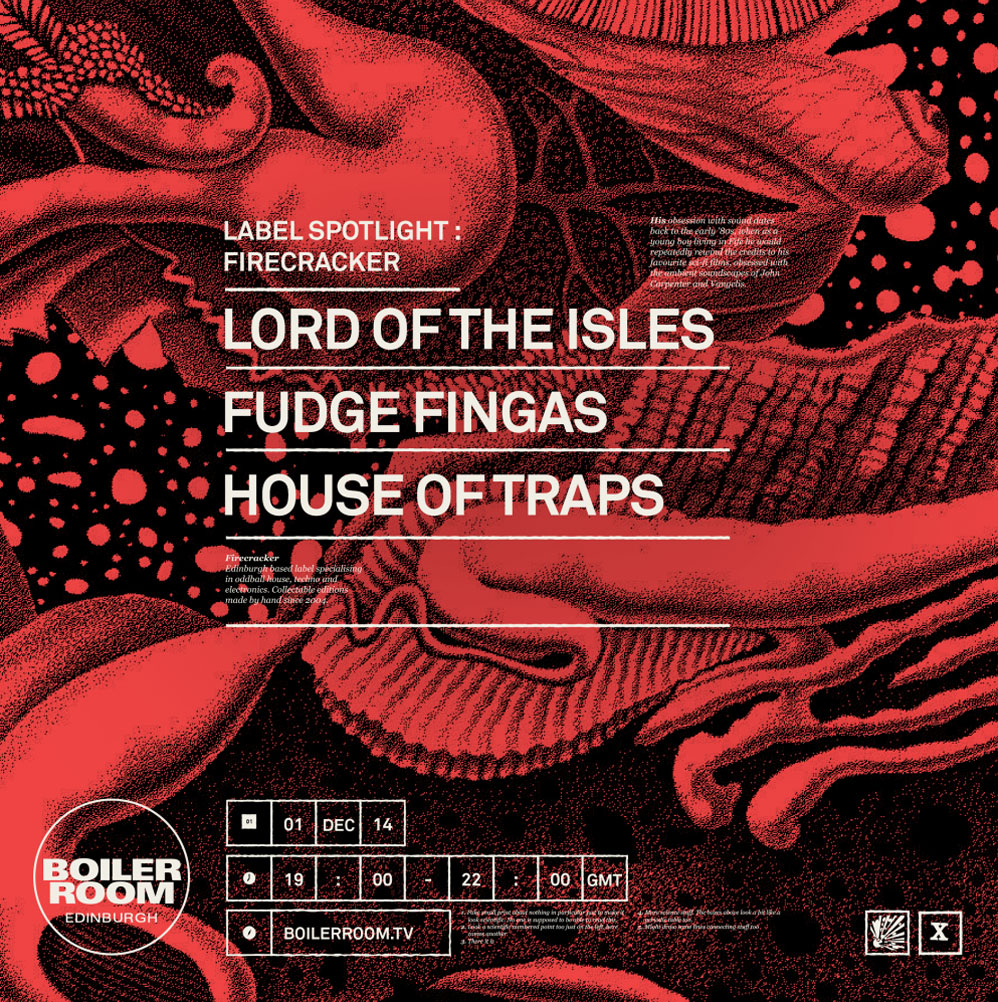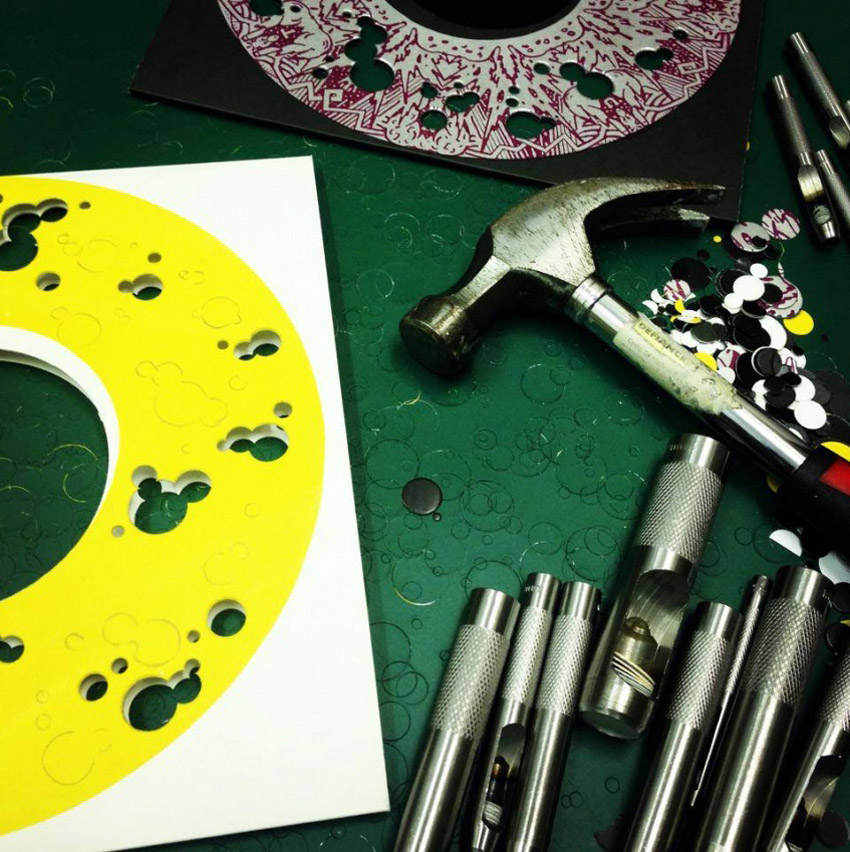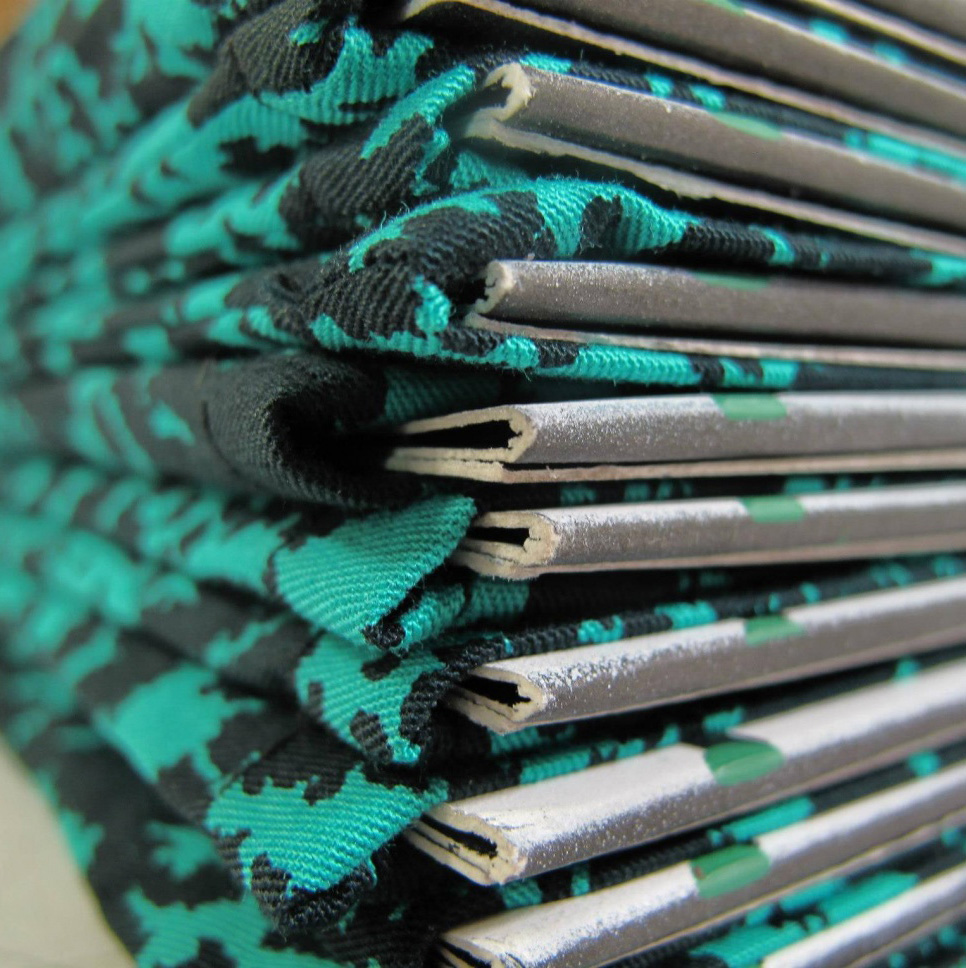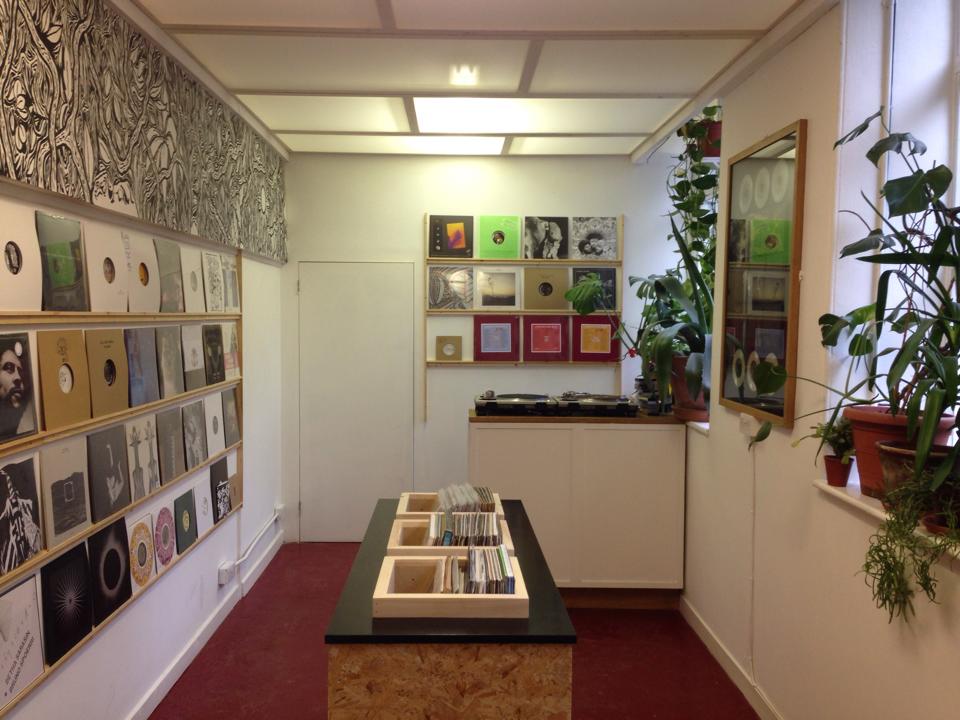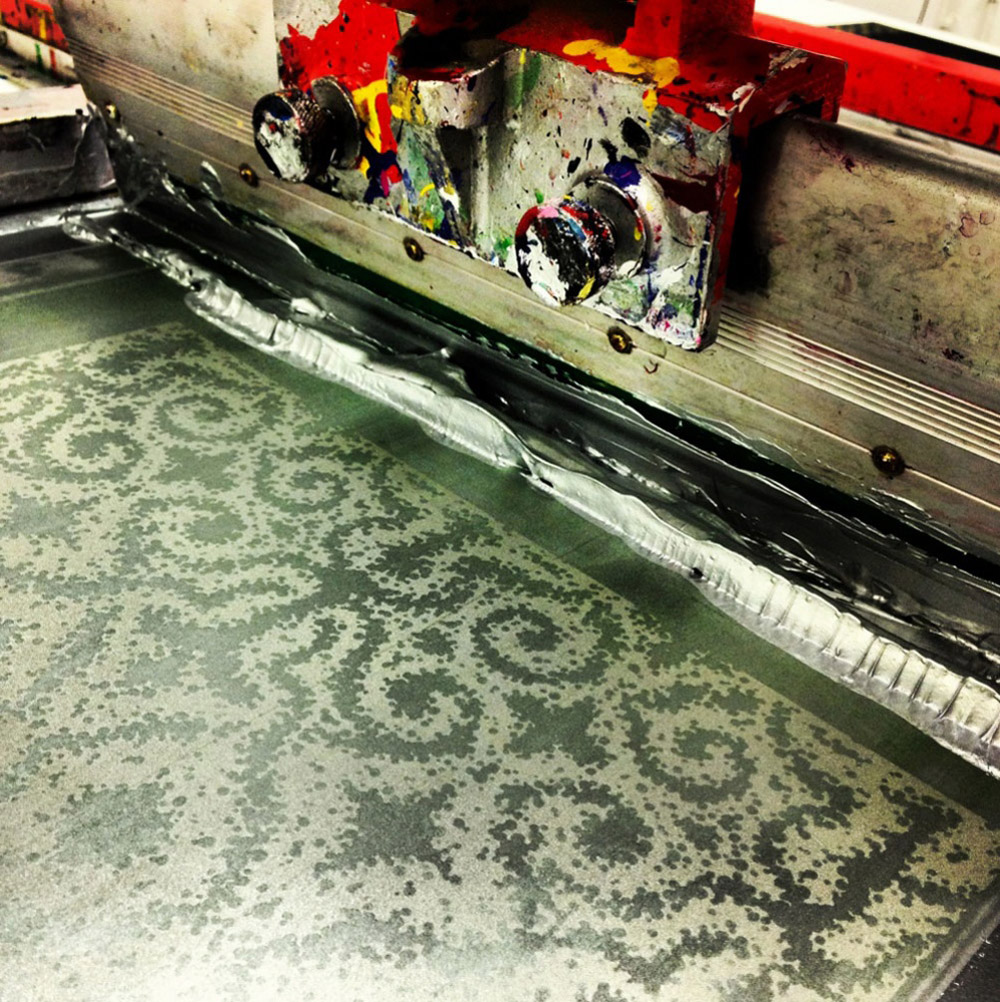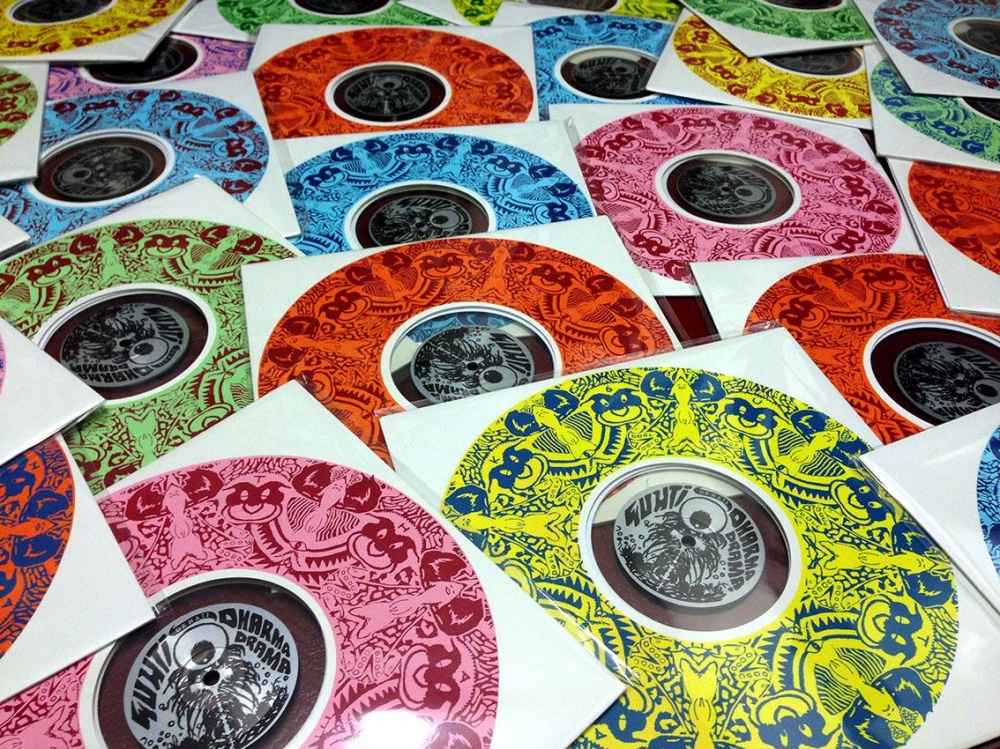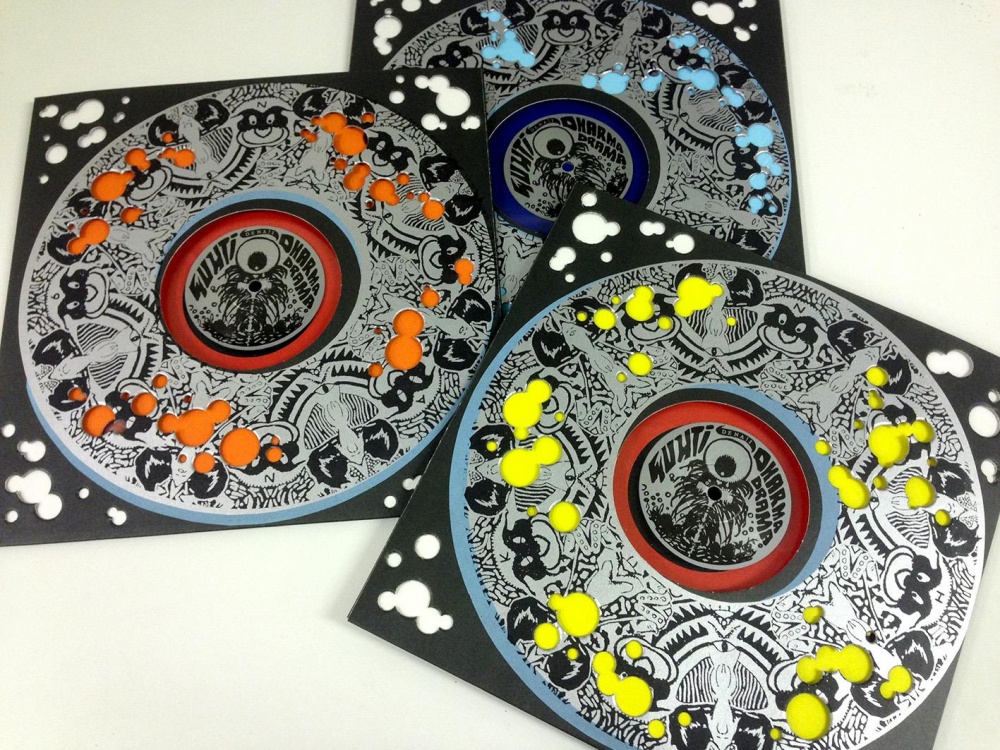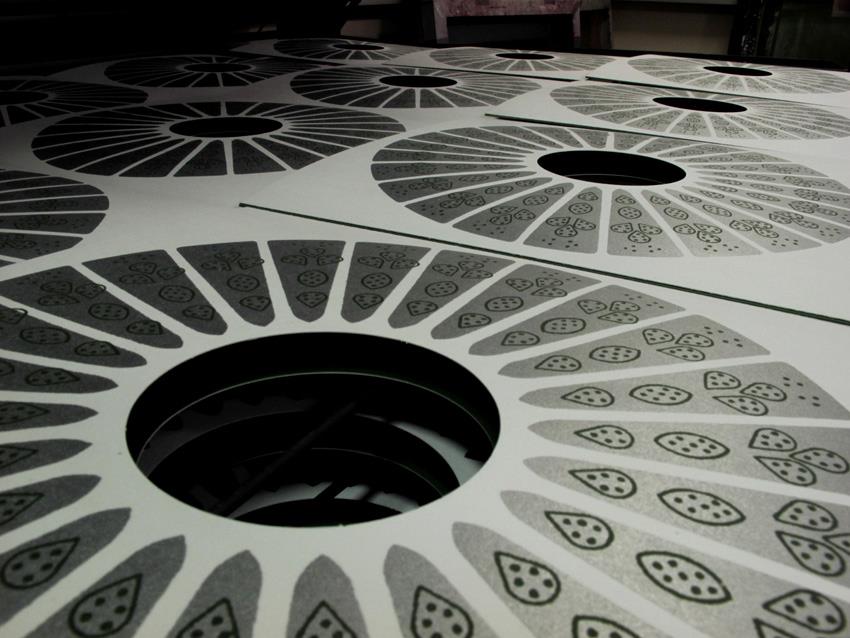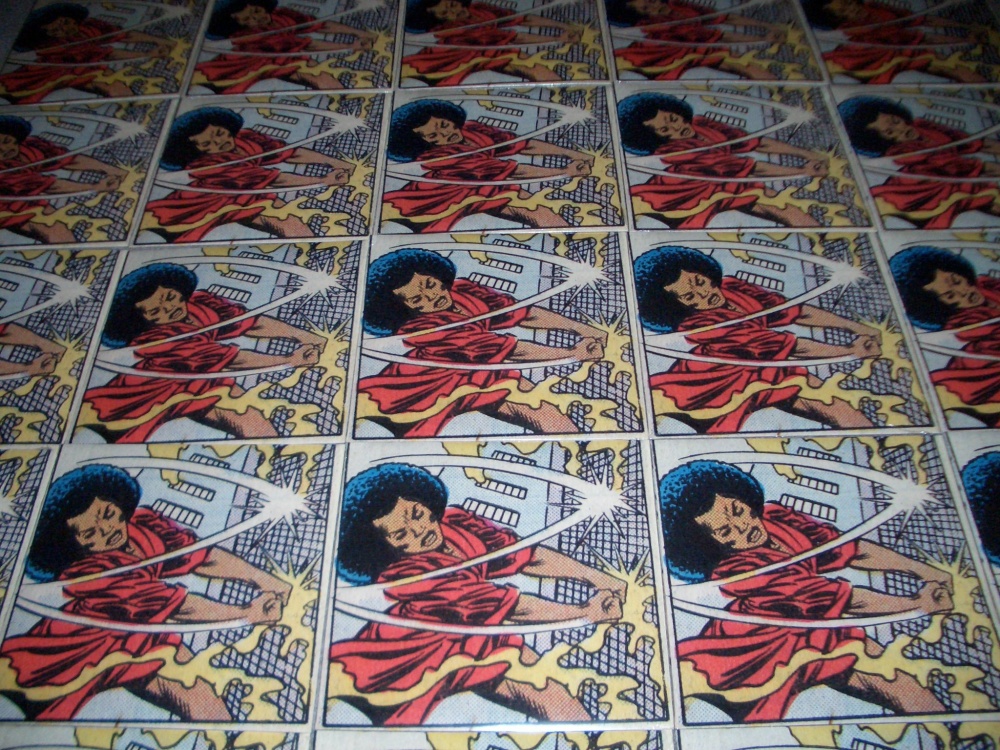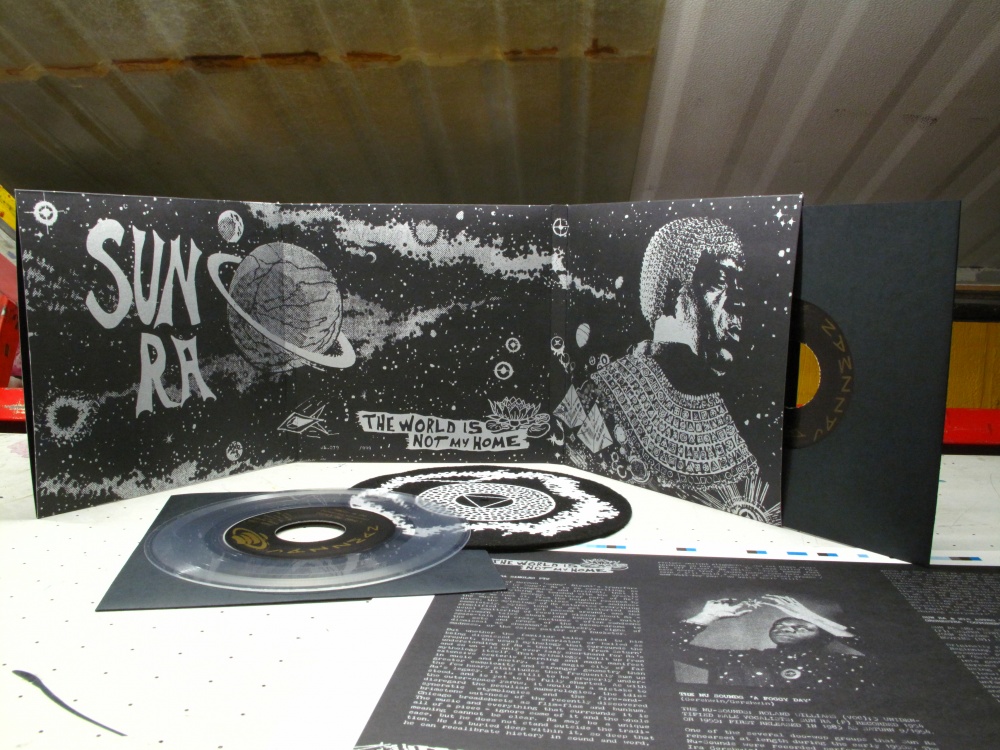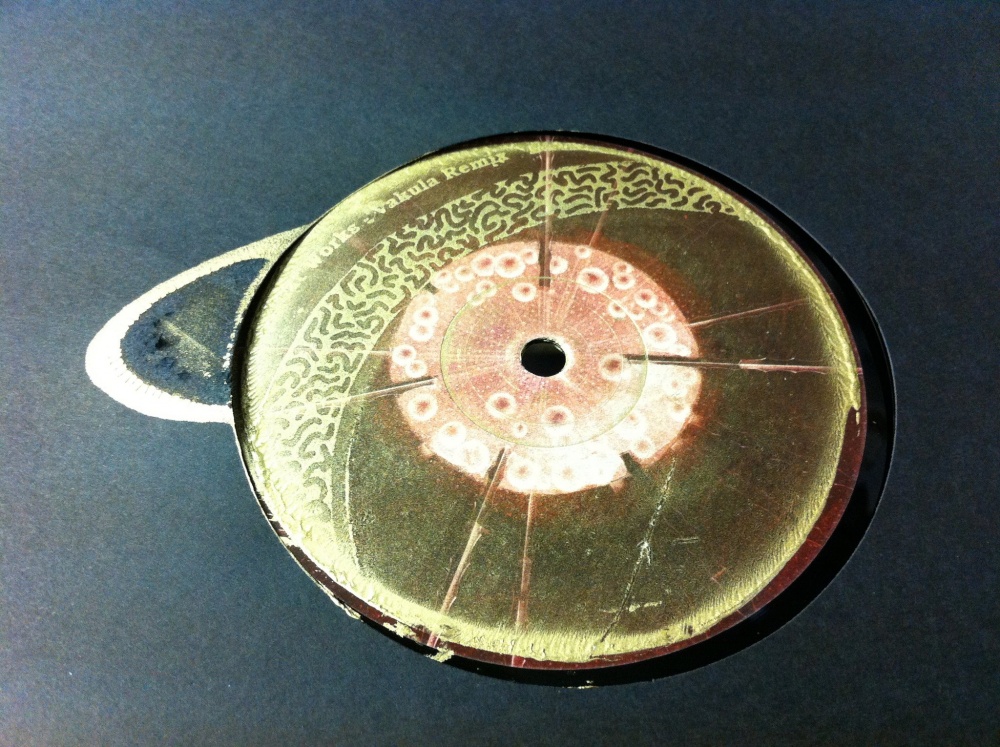Edinburgh-based boutique label Firecracker Recordings have maintained a propensity for quality vinyl pressings and artwork from day dot. Started in 2004 by Lindsay Todd, the imprint’s early flirts with Marvel-esque comic imagery yielded a steady output including five limited 10”s that were nothing short of the ‘highly collectible’ mark. Those embryonic stages would act as introductions to regular label devotees including Fudge Fingas and Linkwood. More recently, 12” releases from its baby sister labels – Shevchenko and Unthank – have kept vinyl fetishists salivating with similarly impressive packages. Artists like Vakula have particularly stamped their soles on Shevchenko, using the fresh terrain to unleash white label gems such as 2011’s Mama Said Go Slow all over your Discogs ‘Most Wanted’ lists.
Firecracker’s latest jaunt comes in the shape of an appointment-only record store. Drawing its name from a Nan Shepherd book, The Living Mountain serves as an extension of Todd’s various music and art projects. Within its stock are a handful of niche label releases from as far afield as Japan, including cassettes as well as the expected pieces of wax.
Before we up sticks across the northern border for our Firecracker Recordings Label Spotlight session, we got some quality time with Lindsay to hone in on his artistic talents, love of nature and the beauty of mistakes.
ERROL ANDERSON: The most recent big news on the Firecracker front is the opening of your boutique record store, The Living Mountain. How have things been since you opened up in August?
LINDSAY TODD: I guess I didn’t really think about how much of my time it would take up – it was meant to have to be an appointment thing. It’s tiny, roughly about 9-by-20ft, so it’s basically a long corridor that could fit a car and a half if this were a garage. We mostly stock new stuff, so labels such as 10 Inches Of Pleasure Records, Opal Tapes, Kimochi, Trilogy Tapes, Wania/Sex Tags and then some smaller labels. I also have some second-hand stock from Japan and other local second hand stuff that comes and goes. It’s manageable and I always have people dropping in on a Saturday. I constructed this Japanese-style ceiling to hide an existing horrible, 70s-style ceiling which I needed to replace. I put these rails in and had wooden frames built before stretching nylon over them so it’s like a Japanese partition and they work really well in the space. All of the wood construction was done by local carpenter David Johnson. There’s also a massive mural along one side of the shop by local artist and good friend Jamie Wilson.
If you don’t mind me asking, are the financial gains from the record shop then fed into the upkeep of the label, or do you keep the two streams separate?
I try to keep the two separate, because I’m not naturally a numbers man so when I start mixing the two it becomes a real dog’s dinner. The labels have been functioning by themselves for about ten years now so I try to keep it that way.
How do things operate with your record distributors, Rubadab?
They just let me get on with it now and they’re very supportive and patient with all the things that I do. For instance, the sleeve for the Panoram release apparently didn’t fit in the standard record mailers, but they never moaned about that. Most distributors would have flipped out! I had some failed attempts with some distributors at the start (who incidentally aren’t around any more), but Rubadub are like family now and are the best at what they do.
Moving on to the aesthetic of the label, it’s clear that there was an infatuation with comic imagery during the embryonic stages. Where does that admiration stem from?
Initially, we went with the comic book imagery because it was really immediate (this is back when we started in 2003) and it really went with the aesthetic of the label as we were focusing on very sample-heavy tracks. It was all a bit cheeky with things that you could get away with back then but maybe not now, and it had quite a profound presence which helped as we were unknown back then. The vibe was to just grab whatever we had around, whether that be samples or comics.
As the music evolved, the art also evolved. Around 2008 or 2009, I started to do all the artwork myself and adapting the comic book thing because the music we were making was less sample-heavy. I thought if I really explored the process of printing or really deconstructing the design process, then I could come up with something fresh and eventually screen printing became a massive part of what we were doing at the time.
It’s interesting that the feel of the label has advanced along with the sound itself. Further down your discography – with the front cover of Fudge Fingas’ Untytled, for instance – you can see there’s a fascination with nature/space/science. How did the idea for that particular release develop?
I was out walking and I’d taken some pictures of moss and lichen on some rocks for that release. I’m inspired by nature, absolutely. Science, nature and space constantly blow my tiny mind and are a common theme not only in my work, but also in the comics where I draw inspiration. [It all probably stems] from a weird and lonely childhood being left to my own devices as a kid. I would just take off to the hills and do my thing and I have gradually rediscovered all of those activities in the last 10 years or so.
I remember there being a very limited edition initial run of the release too…
Yeah, we did a limited edition run for it and the distributor freaked out about it a little bit because they thought everyone would want it and it’d be a nightmare. I actually remember getting emails from people saying: ‘Is that how you roll now? Fuck you, I’m not going to manage to get one of those’, but for me it was just like: ‘Man, you haven’t even tried it yet; it’s not even out!’ We did a run of 42 and that was because the fabric that I bought could only fit 42 sleeves. I’m very impulsive and end up having to work around these things due to my erratic planning. For example, before the shop opened I had this idea for a sculpture in plasticine over one wall. We started it about two days before the shop actually opened and then quickly realised that we needed about two months to do what we planned [laughs].
Another one of my particular favourites happens to be the art for Vakula‘s You’ve Never Been To Konotop (Selected Works 2009-2012)…
If I’m honest, I’m a bit of a chancer so sometimes I just order up the vinyl and the packaging and I’ll have an idea in my head of what I want to do. When I’m at litho stage and the base prints come back to me, I play around with the designs and on the screen prints to experiment. With the Vakula album, we’d spoken in depth about the things that influenced him and one of them was a tribe in Japan called the Ainu who are known for their strikingly ornate textiles and design.Several tracks on the album were inspired by visits to Japan and (I think) I managed to design a cover that included Ukrainian folk design, some Ainu elements and a good dose of cosmic doodling!
So, big question. Out of all the designs you’ve forged, which would you say is your favourite?
I think the one I’m most proud of actually isn’t from Firecracker. I worked with Jazzman on the Sun-Ra cover for The Immeasurable Equation, but on a Firecracker tip the Unthank release from Denaji was the first time I used the clear vinyl with the small labels. There’s loads of different colour versions of it actually. Again, just experimenting at the print stage.
On that note, the screen printing process must be particularly meticulous as every single copy is done one by one…
Yes, every single one is done individually. I only really started doing that in 2008. Before that there were certain screen print elements but parts were scanned in and we’d go to the printers to do the rest. I eventually got access to a screen printing studio and I was able to just spend nights experimenting with the design.
How big a part does experimentation play in the overall design process then?
There was an interview with Morgan Geist roughly ten years ago about his label, Environ. He did this Classics series and I remember him saying that mistakes were his biggest inspiration when hunting for tracks by 80s producers. It’s been the same for me with mistakes that come from experimenting, whether it be leaving them in tracks or a design mishap. In 10 or 20 years you can look back at your favourite record and that’s the sort of stuff that sticks. It gives thing more of a human element. That can be heard in the early days of house and dance music, which I think can be said about a lot of genres which had a certain element of playfulness. Gradually, when people get more familiar with a genre, that playfulness goes. So, when mistakes happen at the print stage they throw up all sorts of new possibilities, some are useful for that project and some can be used down the line.
Looking forward, the next release sees Linkwood return for the release of his second LP, Expressions. What’s the plan for it?
The release will be coming out in the middle of December. There will also be a special edition via Bandcamp with a rigid, hand made wooden sleeve that it slips into. There will be 50 copies of those. Design-wise, it’s a natural progression on what’s come previously with this idea of the orb on previous releases.
Finally, the increasing challenges of releasing physical releases is no new subject. You’ve done an amazing job to not only keep Firecracker afloat, but constantly create exciting release packages. How?
I always think about trying to make something different every time or improving on what was released the last time. I’m really lucky to have a lot of good music and artists around me. Straight after Linkwood, there’s the Lnrdcroy album. Originally released on the 1080p tape label, we’ve updated it a little, swapped some tracks and added a new one so we’re very excited about this! But I don’t really know how the labels work as a whole. I try not to think about ‘keeping afloat’ too much and just keep on trying ideas that would otherwise be thrown in the bin by conventional record labels. ‘Unnovations’ in music, art and design!
Make your way over to the Firecracker Recordings session page here to get more information and RSVP
